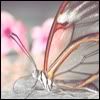|
|
Deer
Dec 29, 2009 12:28:27 GMT -5
Post by Revenge on Dec 29, 2009 12:28:27 GMT -5
Deers
All About the Antlers: The most distinguishing feature of deer must be their antlers. (Only male deer grow antlers, except for reindeer — both sexes have them.) In the spring bony formations begin to sprout from the top of the male's skull. Newly formed antlers are covered with a fine hair called velvet. Eventually, the velvet dries and rubs off, leaving a hard antler ready for battle. Males use their antlers to compete against each other for females. At the end of the breeding season, the antlers fall off. Each year, the males grow a new set of antlers.
Teeth of Terror: Musk and mouse deer do not grow antlers. Instead, large upper canine teeth are used in battle.
Very Different Deer: Smaller species of deer are generally solitary and prefer to browse among bushes and trees alone. Larger deer graze in more open habitats and congregate in herds for protection from predators. Deer can be found in northwest Africa, Eurasia and the Americas.
DID YOU KNOW?
Deer in Headlights: About 1.5 million deer are killed by cars each year in the United States.
Africa's Only Deer: The red deer, or hart, is the only deer species native to Africa. It's also one of the largest of the world's 45 species of deer.
That's Some Rack: The extinct Megaloceros had antlers that stretched nearly 11.5 feet across. This giant deer died out during the Ice Age.
[/blockquote] |
|
|
|
Deer
Dec 29, 2009 12:31:03 GMT -5
Post by Revenge on Dec 29, 2009 12:31:03 GMT -5
The White-Tailed Deer
White-Tailed Deer Profile
White-tailed deer, the smallest members of the North American deer family, are found from southern Canada to South America. In the heat of summer they typically inhabit fields and meadows using clumps of broad-leaved and coniferous forests for shade. During the winter they generally keep to forests, preferring coniferous stands that provide shelter from the harsh elements.
Adult white-tails have reddish-brown coats in summer which fade to a duller grayish-brown in winter. Male deer, called bucks, are easily recognizable in the summer and fall by their prominent set of antlers, which are grown annually and fall off in the winter. Only the bucks grow antlers, which bear a number of tines, or sharp points. During the mating season, also called the rut, bucks fight over territory by using their antlers in sparring matches.
Female deer, called does, give birth to one to three young at a time, usually in May or June and after a gestation period of seven months. Young deer, called fawns, wear a reddish-brown coat with white spots that helps them blend in with the forest.
White-tailed deer are herbivores, leisurely grazing on most available plant foods. Their stomachs allow them to digest a varied diet, including leaves, twigs, fruits and nuts, grass, corn, alfalfa, and even lichens and other fungi. Occasionally venturing out in the daylight hours, white-tailed deer are primarily nocturnal or crepuscular, browsing mainly at dawn and dusk.
In the wild, white-tails, particularly the young, are preyed upon by bobcats, mountain lions, and coyotes. They use speed and agility to outrun predators, sprinting up to 30 miles (48 kilometers) per hour and leaping as high as 10 feet (3 meters) and as far as 30 feet (9 meters) in a single bound.
Although previously depleted by unrestricted hunting in the United States, strict game-management measures have helped restore the white-tailed deer population.
Deer Range (In the yellow)
Fast Facts
Type: Mammal
Diet: Herbivore
Average lifespan in captivity: 6 to 14 years
Size: 6 to 7.75 ft (1.8 to 2.4 m)
Weight: 110 to 300 lbs (50 to 136 kg)
Group name: Herd
Did you know? "White-tailed” refers to the white underside of the deer’s tail, which it displays and wags when it senses danger.
Size relative to a 6-ft (2-m) man
|
|
|
|
Deer
Dec 29, 2009 12:31:39 GMT -5
Post by Revenge on Dec 29, 2009 12:31:39 GMT -5
|
|





